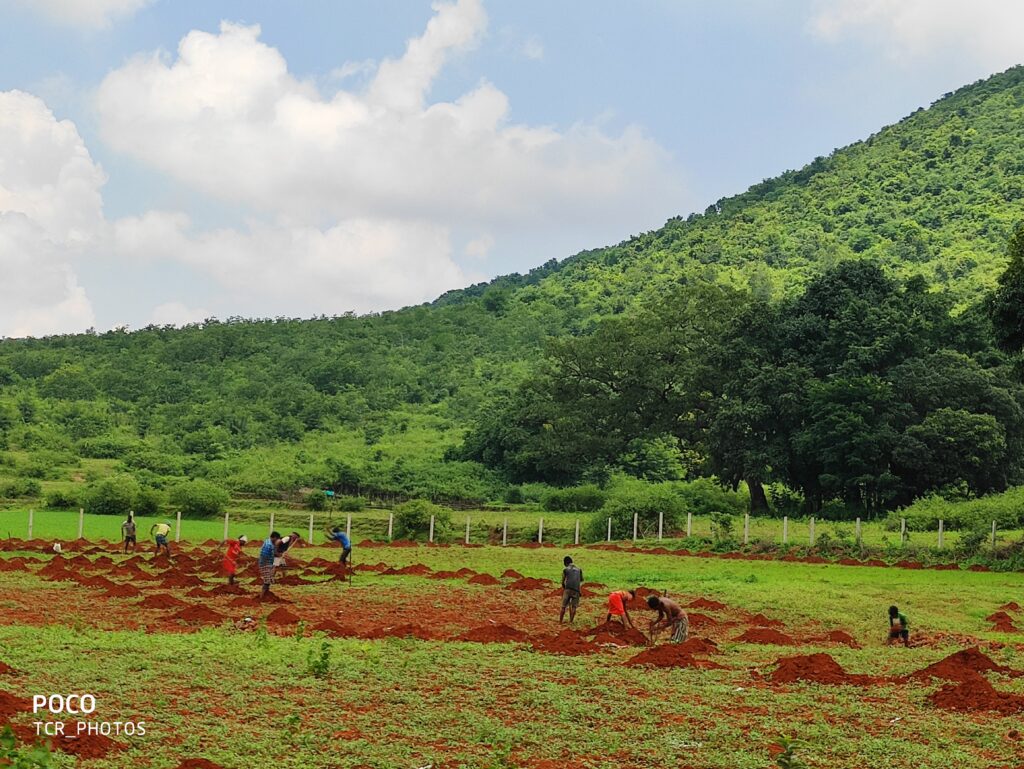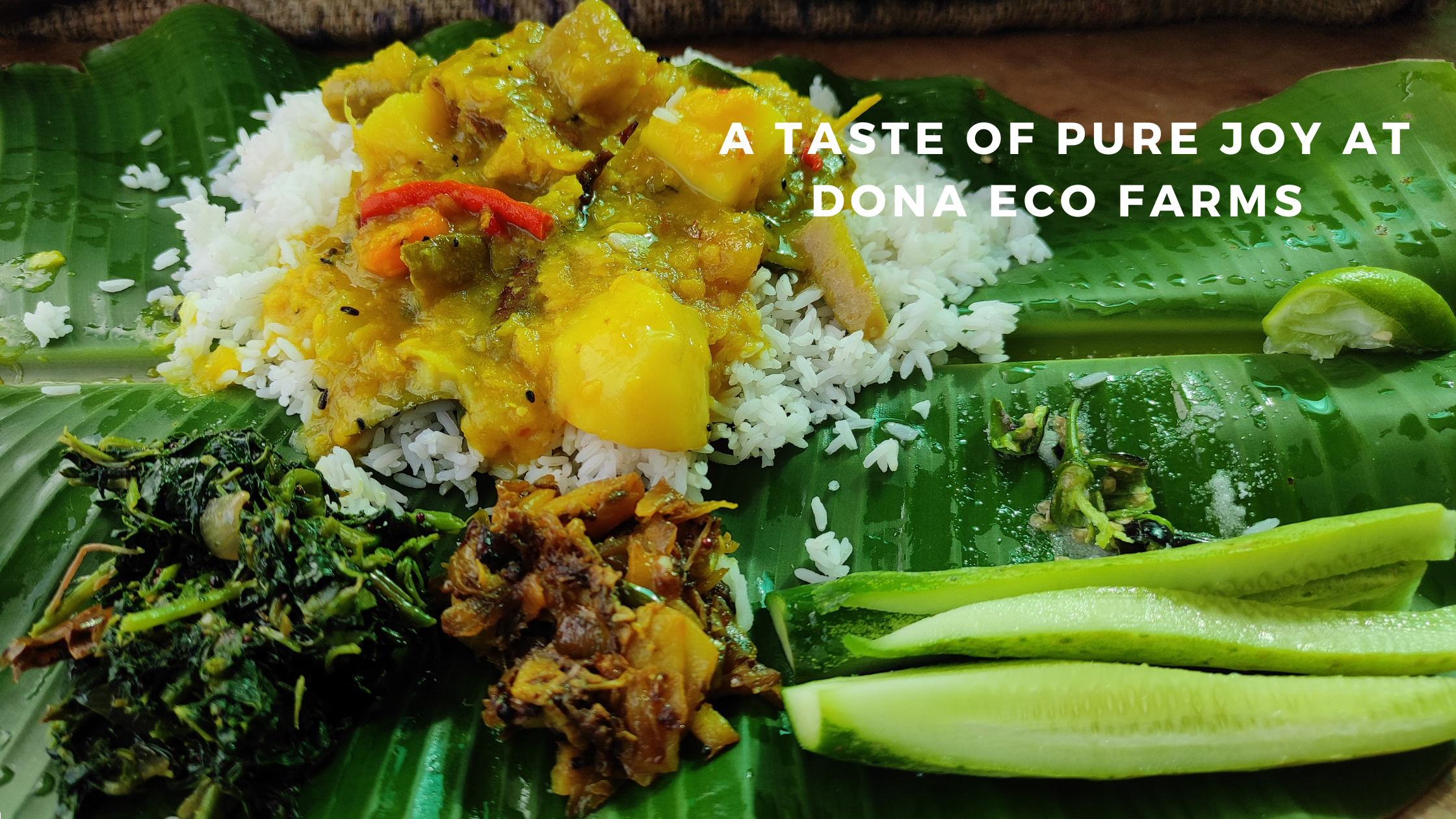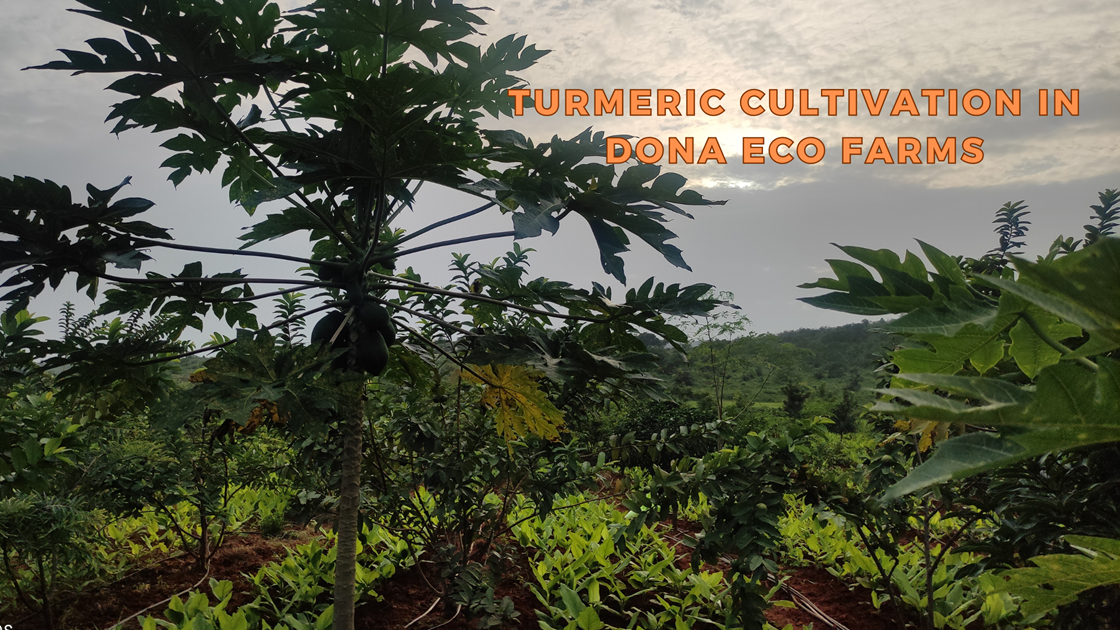In 2020, I stood on a vast expanse of land in Koraput, Odisha, that was anything but promising. The ground beneath my feet was barren, the soil dry and depleted, and the only visitors were wandering cattle using it as a grazing field. Yet, amidst this desolation, I envisioned a thriving, sustainable farm—a lush green paradise that would not only nourish the land but also inspire local farmers. This is the journey of Dona Eco Farms that came to life against all odds.
The Humble Beginnings:
The initial sight of the land was daunting. Rocks and stones were scattered everywhere, and each rainfall led to severe water runoff, washing away whatever little topsoil remained. Establishing a proper boundary was our first significant challenge—to protect the land from grazing cattle and control the damaging flow of water.
Undeterred, we began our journey by understanding the land’s potential. We started with cultivating millets, intending to test the soil’s fertility and observe how different areas of the field responded. The results were mixed; while some patches yielded satisfactory produce, others reminded us of the long road ahead. But these early trials provided invaluable insights and reinforced our determination to transform this neglected land.
Embracing Permaculture Principles:
Realizing that conventional farming methods might not suffice, we turned to Permaculture, a system that emphasizes working with nature rather than against it. We meticulously planned and zoned the farm into six distinct areas, each designated for specific purposes and crops. This strategic approach ensured optimal use of space and resources while promoting biodiversity and ecological balance.
The zoning process was both exciting and challenging. Deciding where to plant what required careful consideration of various factors like sunlight exposure, water availability, and soil conditions. But with each decision, the vision of Dona Eco Farms became clearer and more tangible.
Implementing Subash Palekar’s Natural Farming Model
To further enhance the sustainability and productivity of the farm, we adopted the Subash Palekar Natural Farming Model, particularly the 36×36 model. We began by planting mango trees at 36-feet intervals, creating a foundational canopy that would support and nurture other crops beneath.

Sourcing quality seedlings was another hurdle we had to overcome. We traveled extensively to collect diverse varieties of mangoes and other fruit trees native to our region, ensuring genetic diversity and resilience. In the one-acre plot dedicated to this model, we introduced a plethora of fruit trees like guava, custard apple, and arecanut, maintaining a nine-feet distance between each. The spaces in between were creatively utilized to cultivate ginger and turmeric, maximizing land use and promoting complementary plant relationships.
Early Successes and Boosting Sustainability:
Understanding that a sustainable farm must also be economically viable, we focused on crops that could provide immediate returns. Ginger cultivation on one acre proved to be a game-changer. The bumper yield not only boosted our confidence but also generated significant revenue to reinvest into the farm’s development.

Encouraged by this success, we ventured into banana cultivation, despite concerns about Koraput’s cold climate. To our delight, the bananas thrived, validating our risk-taking spirit. We ingeniously intercropped sweet potatoes between the banana plants on ridges before the monsoon season. Utilizing drip irrigation, the sweet potatoes established quickly, eventually covering the ground and effectively suppressing weeds. This multilayered cultivation approach exemplified our commitment to efficiency and sustainability.
Integrating Livestock and Enhancing Biodiversity:
Recognizing the vital role of livestock in sustainable agriculture, we integrated cows, goats, and chickens into the farm ecosystem. These animals contributed to soil fertility through natural manure and provided additional sources of income and sustenance. And then there was Jimmy, our loyal German Shepherd, who became the farm’s vigilant guardian and beloved companion, ensuring security and adding joy to our daily routines.
As the farm flourished, nature began to reciprocate our efforts. Various species of birds started visiting, filling the air with melodious songs and contributing to pest control and pollination. To protect the farm from harsh winds and further support local wildlife, we planted silver oak trees around the perimeter. Witnessing this growing biodiversity has been one of the most rewarding aspects of our journey, affirming that our practices were nurturing not just crops but entire ecosystems.

Innovative Water Management:
Water scarcity and management were persistent challenges we had to address thoughtfully. Implementing a drip irrigation system proved to be an efficient solution, ensuring that each plant received adequate water while significantly reducing wastage. This method also lowered labor costs and allowed us to maintain consistent moisture levels crucial for optimal plant growth. Effective water management has been instrumental in sustaining the farm through varying seasonal conditions and ensuring resilience against climate uncertainties.
Inspiring and Educating for a Sustainable Future:
From a barren, rocky landscape, Dona Eco Farms has transformed into a vibrant, productive haven teeming with life and abundance. But our journey doesn’t end here. The true purpose behind this transformation has always been to inspire and educate fellow farmers, demonstrating that with dedication, innovative practices, and respect for nature, sustainable farming is not only possible but also profoundly rewarding.
We envision Dona Eco Farms as a learning center where farmers can witness firsthand the benefits of permaculture and natural farming methods. By sharing our experiences, successes, and lessons learned, we hope to motivate others to adopt sustainable practices, contributing to environmental conservation and improved livelihoods.
A Reflection on Transformation and Dedication:
Looking back, the journey has been filled with challenges, learning curves, and moments of triumph. Each stone removed, each seed planted, and each new life nurtured has been a step towards realizing a dream that once seemed distant. The transformation of Dona Eco Farms stands as a testament to what unwavering dedication and harmonious collaboration with nature can achieve.
As we continue to cultivate and care for this land, we remain committed to exploring new methods, embracing innovations, and fostering connections within our community. We believe that the journey of Dona Eco Farms is just beginning, with many more chapters of growth, learning, and inspiration yet to be written.
In the end, this journey has taught us that no land is too barren, and no dream too big when approached with passion and perseverance. We hope our story encourages others to embark on their journeys of transformation, nurturing not only the earth beneath their feet but also the communities and ecosystems that surround them.
Thank you for joining us on this journey. Stay tuned for more updates and stories from Dona Eco Farms, where nature and nurture come together to create lasting abundance.
Follow us:





14 thoughts on “The Journey of Dona Eco Farms: From Barren Land to Lush Green Paradise”